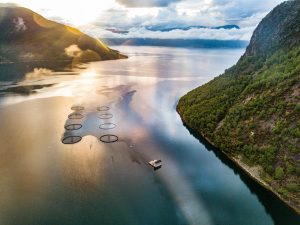Eco-labeling in aquaculture: Ensuring sustainable products

Dive into the fascinating world of eco-labeling and discover how this practice is transforming purchasing decisions in the aquaculture industry. As environmental awareness grows, consumers increasingly seek marine products from sustainable sources. In this article, we explore standards, certifications, and the impact of eco-labeling on the sustainability of seafood.
Eco-labeling in aquaculture is a key tool to inform consumers about the sustainability of the products they choose. This practice involves placing labels or seals on seafood products, indicating compliance with certain environmental and social standards. By adopting these labels, producers and distributors commit to practices that reduce negative impacts on aquatic ecosystems and promote social responsibility.
Rigorous standards for sustainability
Various organizations, such as the Marine Stewardship Council (MSC) and the Aquaculture Stewardship Council (ASC), have established rigorous standards to assess and certify sustainability in aquaculture.
MSC:
ASC:
Globally recognized certifications
Certifications associated with eco-labeling are recognized worldwide and play a crucial role in creating a sustainable supply chain. Obtaining certifications such as MSC for wild-caught fish or ASC for aquaculture means operations comply with specific sustainability criteria.
These certifications not only ensure environmentally responsible practices but also promote transparency in the supply chain. Consumers, by identifying these seals on products, can trust that they are contributing to ocean preservation and supporting companies committed to ethical and sustainable standards.
Impact on consumer decision-making
Eco-labeling benefits not only marine ecosystems but also empowers consumers by providing transparent information about the origin of seafood products. Sustainability-conscious consumers can make informed purchasing decisions, supporting companies committed to responsible practices. This shift in market demand compels more producers to adopt sustainable practices to maintain relevance in an industry increasingly focused on environmental responsibility.
Challenges and opportunities in eco-labeling
Although eco-labeling has made significant strides, it faces challenges from supply chain verification to standard variability in different regions.
Opportunities for improvement and standardization
Despite these challenges, there are significant opportunities to improve and standardize sustainability practices globally. Collaboration between governments, NGOs, and the industry can contribute to the creation of more uniform standards and more effective monitoring systems.
How to differentiate between high and low-demand eco-labels
When consumers encounter a variety of eco-labels, it is crucial to consider certain elements to assess the quality and stringency of each:
By paying attention to these elements, consumers can make more informed decisions and support brands striving to meet the highest sustainability standards in aquaculture.
Closing the sustainability loop in aquaculture
In a world where individual choices can have a significant impact, eco-labeling emerges as a beacon of hope for sustainable aquaculture. Global collaboration and technological innovation are paving the way for more comprehensive and transparent standardization. As consumers become more aware, their power to drive sustainable practices through informed purchasing decisions becomes a vital engine for positive change.
Each eco-sustainable label is more than a badge on a product; it is a commitment to the health of our oceans, the preservation of marine life, and the prosperity of communities. Ultimately, eco-labeling not only reflects the current state of aquaculture but also the shared vision of a future where seafood production not only feeds populations but does so ethically and sustainably. With each informed choice, consumers become custodians of our oceans, propelling positive transformation in the aquaculture industry and leaving a lasting legacy for generations to come.
This article is presented by Aquanetwork, your reliable source for job opportunities in the aquaculture industry. Connect with employers and passionate professionals at Aquanetwork.